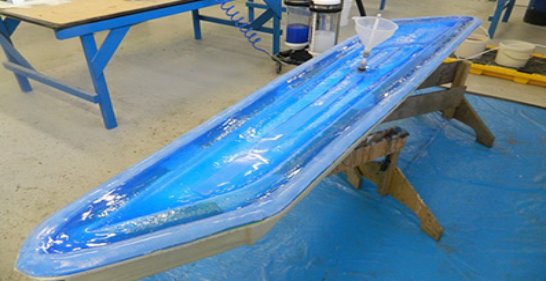Innovative technology using silicone membranes during vacuum infusion
CIECH Sarzyna is expanding its offer in the segment of innovative technologies, which offers the use of a silicone membrane in the vacuum infusion process.
The reusable silicone diaphragm allows the replacement of disposable infusion tissue and a variety of other materials. This solution facilitates and speeds up the production of the composite using the infusion method, which is the cheapest production method among all closed mold technologies.
Owned by the international chemical group CIECH, the CIECH Sarzyna plant is the main producer of resins in Poland, present on the European markets. This technology is presented in cooperation with British company Alan Harper Composites Ltd, which specializes in closed molding processes.
Vacuum infusion is an advanced technology used in the production of composites. It allows the production of highly precise and durable composites used to create structural elements, including aircraft, yachts, wind turbines or cars.
Silicone membrane technology consists of replacing the often disposable infusion tissue and a number of other materials with a silicone reusable membrane designed for a given form. As a result, the silicone membrane facilitates and speeds up the production of the composite using the infusion method, which is the cheapest production method among all closed mold technologies. Importantly, the technology introduced by CIECH Sarzyna simultaneously provides all the benefits of vacuum infusion technology.
The most important advantages of the technology using silicone membranes in the vacuum infusion process include, first of all, faster production and even a threefold reduction in higher and labor-intensive costs. This technology requires relatively little investment and little shape modification, while ensuring independence from skilled personnel that are in short supply in the labor market.
It is worth noting that one silicone diaphragm can be used for up to 500 molds. With relatively low investment costs, the return on investment will already be at the level of 2 to 20 castings, depending on the current labor costs, the size and complexity of the mold. In addition, the technology of silicone membranes, in comparison with manual lamination, accelerates production up to three times, and compared to “fabric”, the speed of forming is twice.

